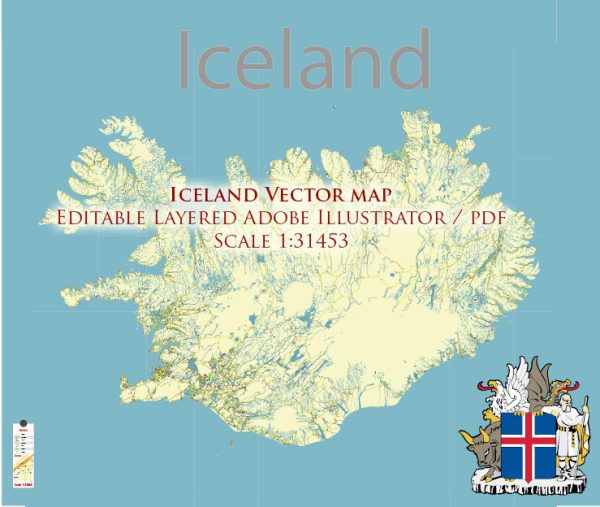Iceland is known for its stunning and diverse natural landscapes, and it boasts several national parks that showcase the country’s unique beauty and geology. Here is a brief description of some of Iceland’s national parks:
- Vatnajökull National Park: Located in the southeastern part of Iceland, Vatnajökull National Park is the largest national park in Europe. It is named after the Vatnajökull glacier, which covers a significant portion of the park. The park features a wide range of landscapes, including glaciers, volcanoes, waterfalls, and dramatic canyons. It is a paradise for hikers and outdoor enthusiasts.
- Þingvellir National Park: Situated in southwestern Iceland, Þingvellir (or Thingvellir) National Park holds historical and geological significance. It’s where the Alþingi, one of the world’s oldest parliaments, was established in the year 930. The park also straddles the Mid-Atlantic Ridge, making it a unique place to witness the separation of the North American and Eurasian tectonic plates. Visitors can explore the rift valley and enjoy activities like snorkeling or diving in Silfra, a crystal-clear fissure filled with glacial water.
- Snæfellsjökull National Park: Located on the Snæfellsnes Peninsula in western Iceland, this national park is dominated by the iconic Snæfellsjökull volcano and glacier. It was made famous by Jules Verne’s novel “Journey to the Center of the Earth,” where the volcano served as the entrance to a subterranean world. The park features a diverse landscape, including lava fields, coastal cliffs, and unique rock formations.
- Jökulsárgljúfur National Park: This national park is situated in northern Iceland and is known for its dramatic canyons and waterfalls, particularly Ásbyrgi, a horseshoe-shaped canyon, and Dettifoss, one of Europe’s most powerful waterfalls. The park offers numerous hiking trails with opportunities to explore the rugged beauty of the region.
- Snæfellsjökull National Park: Located on the Snæfellsnes Peninsula in western Iceland, this national park is dominated by the iconic Snæfellsjökull volcano and glacier. It was made famous by Jules Verne’s novel “Journey to the Center of the Earth,” where the volcano served as the entrance to a subterranean world. The park features a diverse landscape, including lava fields, coastal cliffs, and unique rock formations.
- Hornstrandir Nature Reserve: While not technically a national park, Hornstrandir is a protected nature reserve in the far northwestern corner of Iceland. It is one of the most remote and untouched areas in the country, known for its stunning fjords, dramatic cliffs, and abundant wildlife, including Arctic foxes and seabirds. The area is popular among trekkers and nature enthusiasts.
These national parks and nature reserves in Iceland offer a wide range of experiences, from exploring unique geological formations to enjoying the country’s rich history and biodiversity. Each park has its own distinct charm, making Iceland a paradise for nature lovers and adventurers.


 Author: Kirill Shrayber, Ph.D.
Author: Kirill Shrayber, Ph.D.